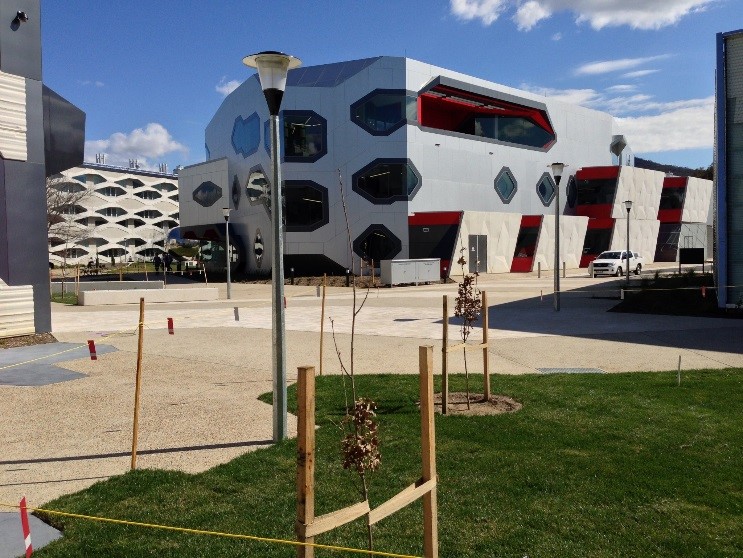
History
The Research School of Chemistry (RSC) has a remarkable and diverse history.
The School was founded in 1967. The beautiful and technically efficient building (later named the Birch Building) comprised 120,000 square feet in area and with its furnishings, cost $2,794,000.

The intention in setting up the School was to provide a 'centre of excellence' equipped to the most modern standards, and competitive to any centre in Europe or the United States. The original building consisted of a core, chiefly composed of service laboratories, especially those which required temperature control, with an outstanding ring of laboratories and offices. The research work was planned around physical facilities and the availability of appropriate staff to utilise them. Much of the selected research was of special difficulty or offered long-term characteristics that were appropriate to a research dedicated institution.
Within its core were laboratories for analysis, low temperature work, toxic preparations, radioactive synthesis and measurement, a fire-proof laboratory and laboratories containing separation equipment (gas-liquid and steady state partition chromatography), spectrometers (for ultra-violet, infra-red, nuclear magnetic resonance, electron-spin resonance) and mass spectrometry and a laboratory for microbiological chemistry.
From the outset the School was concerned not only with in the results of pure research, but in providing a very advanced training ground appropriate to people, many of them from abroad, who would eventually work in other universities, in research institutions such as CSIRO, or in industry. Additionally, the fields of research originally selected were those of a fertile and developing nature and with foreseeable long-term interest in the Australian environment. Strong emphasis was placed on inorganic chemistry, on substances of biological interest (insect chemistry, antibiotic chemistry, plant chemistry), on synthetic chemistry which could be applied in many directions, and on aspect of solid-state chemistry and photochemistry.
With its high level of instrumentation and the associated experts on its staff, RSC exerted a catalytic effect in making both instrumental services and experts available outside the School for research and teaching purposes.
The founding staff comprised two Professors, three Senior Fellows, five Fellows, eighteen Research Fellows and sixteen Scholars. Professor Arthur Birch FAA FRS, of Birch reduction fame, served as the foundation Dean of Chemistry. He was ably assisted, and then succeeded, by Professor David Craig FAA FRS, an internationally renowned theoretical chemist. The profound impact of the research carried out by members of the RSC since its founding has resulted in the election of many of its staff to the Fellowship of the Australian Academy of Science and the Royal Society (London). Indeed, the RSC has had more of its staff elected to these two learned societies that any other Chemistry Department or School in Australia. The RSC now comprises over twenty research groups undertaking research across the breadth of the chemistry discipline.
The second RSC construction, the Craig Building, was opened on 28th February 1994 to afford further accommodation for the physical, theoretical and the expanding biological chemistry groups, and to accommodate the IT unit.
The former Department of Chemistry (DoC) predates the RSC, having been established in 1959 and was located adjacent to the RSC. The DoC was headed by Professor Arthur Hambly during its first eight years of operation. While the DoC had a major focus on delivering an undergraduate teaching program in chemistry, many of its staff also ran vigorous research programs and achieved international prominence as a result.
On 1st January 2009, the RSC merged with the DoC and so the new Research School of Chemistry was born. The combining of the strengths of the two progenitors has resulted in a unique entity that offers the very best opportunities for studying chemistry at both the undergraduate and postgraduate levels.
In late 2013, the RSC entered a new era with its move from its four buildings into a new, large $90 million building with state-of-the-art laboratories, equipment and facilities. Adjacent to this research building is a purpose-built building that houses the laboratories for undergraduate practical classes. Both buildings are near the centre of campus and are co-located with the Research School of Biology in a science precinct.

This new phase in the RSC’s history will ensure the School’s continued output of world-leading research and teaching activities across the broad spectrum of chemistry.

